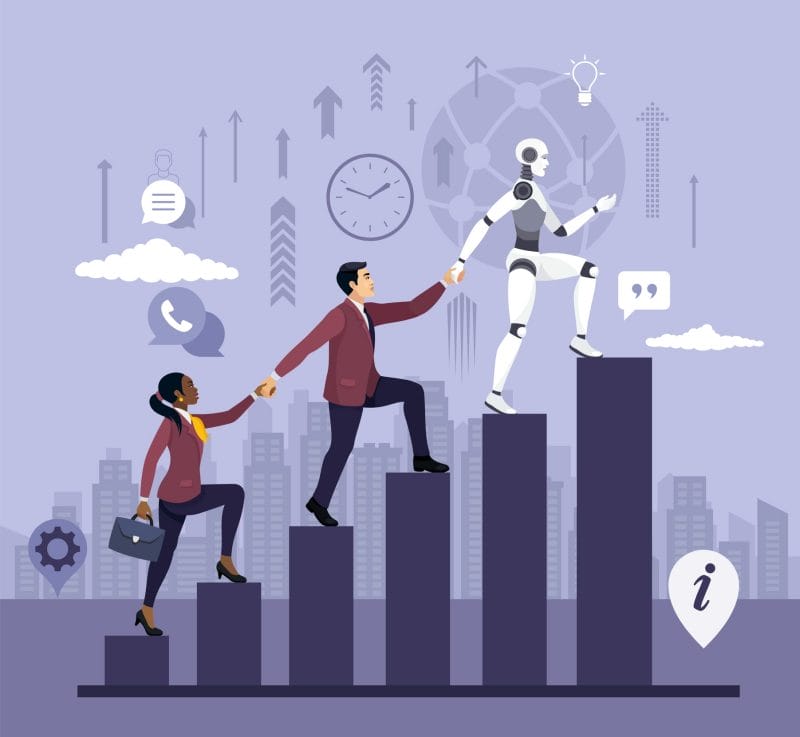
The MSP Success Thought Leaders Program invites leaders in the small business IT/MSP industry to share their insights and advice with MSP Success readers.
In today’s digital age, we are constantly seeking innovative ways to streamline operations and reduce costs. Who can blame us? For instance, replacing front-line customer service humans with artificial intelligence (AI) as a way to reduce costs has recently gained significant attention. This may initially seem to be an easy, cost-effective path to economic salvation, but at what price?
Let’s look for a moment at the definition of “artificial”: “made by human skill; produced by humans (opposed to natural).” What comes to mind when thinking of artificial sweeteners, artificial flowers, or artificial coloring? That’s right, imitation, not the real thing—a simulation, a sham maybe, almost real but not quite.
So “artificial intelligence” is “imitation intelligence.”
No doubt, AI-powered customer service systems offer a range of benefits, such as 24/7 availability, quick response times, and consistent handling of customer queries. They can process vast amounts of data, enabling personalized experiences and recommendations. These advantages make AI attractive for businesses looking to optimize customer service operations. But what if your company does not possess a vast amount of customer data to draw on? Where will the “imitation intelligence” come from? A database built from other companies’ experiences? Will those experiences be appropriate for you?
We should all be concerned about the potential loss of human expertise. Human customer service representatives possess valuable experience and knowledge that AI systems cannot replicate. They understand the nuances of different customer problems, offer creative solutions, and build rapport with customers. By replacing humans with AI, we lose this human element. This can only lead to a decline in customer satisfaction.
AI bots are running rampant everywhere I turn, whether by phone or website, seeking sales information, general information, or support. Phone trees are bad enough, forcing you to navigate a series of questions with a keypress. Suddenly, the tree has also become an AI bot that starts talking back to you, sounding like a real person, and then refusing to accept a keypad input for a response or asking and repeating questions that have no bearing on your issue with no way out of the insane loop. How long it will be before customers like me slam down the phone and try elsewhere to get service?
Don’t Fall Into the Potential Trap
And there is the trap: thinking that artificial intelligence can replace human service, reduce costs, and be our business salvation. AI systems lack human touch and empathy. AI systems cannot handle emotions, read nonverbal cues, or provide personalized responses. No matter how advanced, AI systems are prone to errors and limitations. They may misinterpret customer queries, offer incorrect solutions, or fail to understand complex situations. Such mistakes harm customer satisfaction and increase business workload as customers seek additional assistance to rectify AI-generated errors.
A critical aspect of customer service is handling sensitive and confidential information. While AI systems may incorporate robust security measures, the risk of data breaches and privacy concerns cannot be ignored.
Language and cultural barriers are additional hurdles to consider. AI-driven language processing systems may struggle with regional accents, dialects, and cultural nuances. This can result in miscommunication, misunderstandings, and a failure to address the specific needs of diverse customer bases. Language barriers create friction. This will leave customers feeling frustrated, misunderstood, and devalued, negatively impacting the overall customer experience and damaging the customer-business relationship.
Human customer service representatives can navigate these issues effectively, ensuring customer trust and a secure environment for sharing personal information.
Remember That Our Foundation Is Excellent Service Delivery
Our businesses are built on the delivery of excellent customer service. AI can be a powerful tool for improving our service delivery, but not by REPLACING it. We must recognize the challenges and drawbacks associated with relying solely on AI and train our people on the practical and appropriate use of AI, just as we have utilized automation for critical elements of our service delivery—but always with human oversight to validate the correctness of the application.
Ultimately, we as MSP business owners need to strike a balance between AI and human customer service. By combining AI technology’s strengths with human interaction’s essential qualities, we can effectively offer a holistic customer experience that addresses concerns and meets our customer expectations.
While using AI to replace front-line customer service staff may appear tempting as an easy and cost-saving option, the potential negative impacts on customer experience should not be disregarded. The lack of empathy, loss of human expertise, language barriers, potential errors, and security concerns all harm the overall customer experience. Businesses can optimize their customer service operations by balancing AI and human interaction while ensuring customer satisfaction and loyalty.
AI—salvation or trap? It all depends on how you choose to implement it.
For more information about Quick Compute, visit quickcompute.com.












